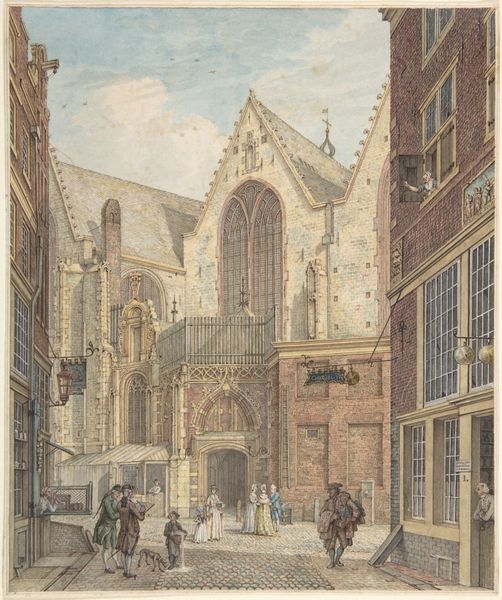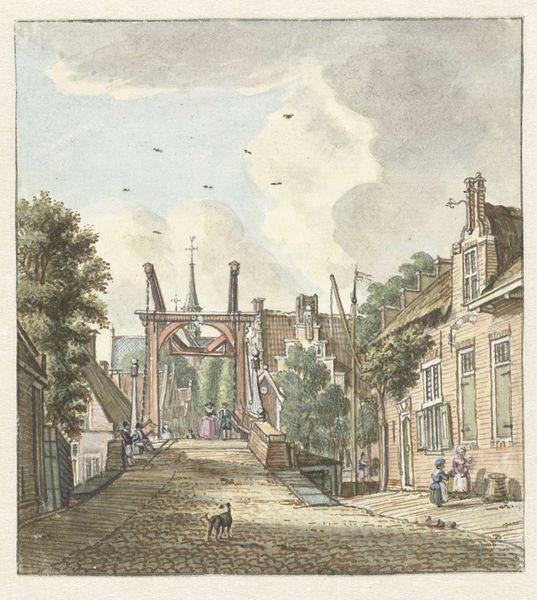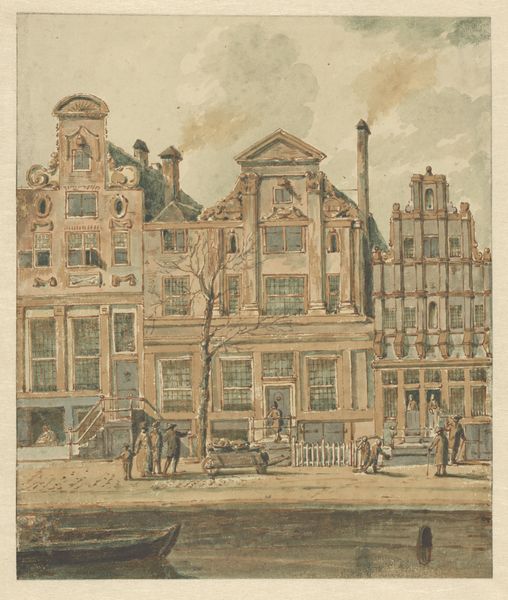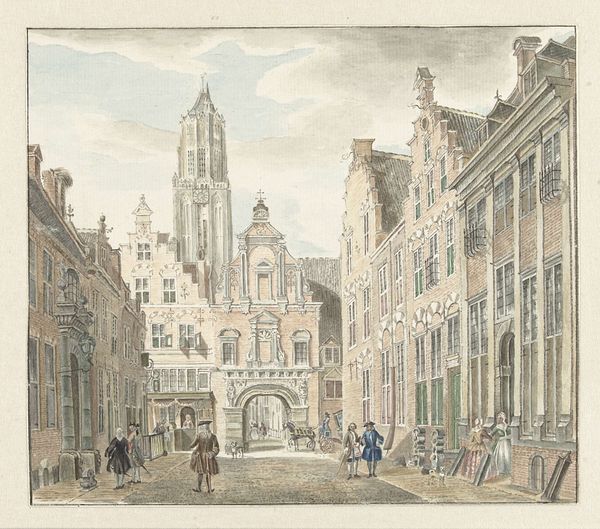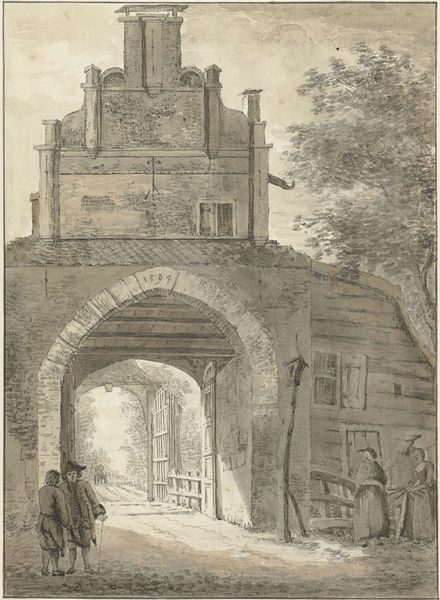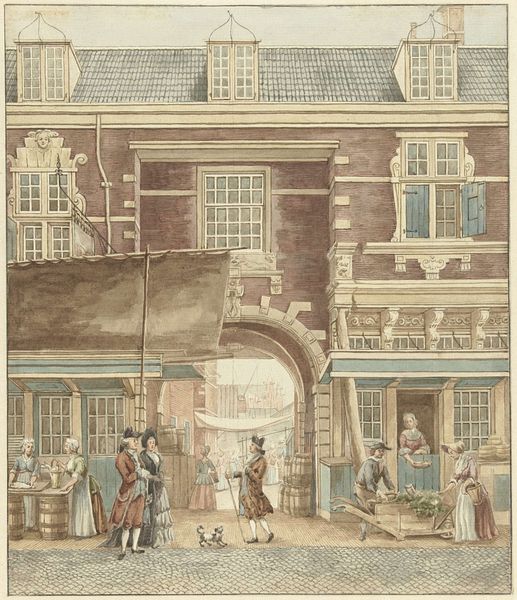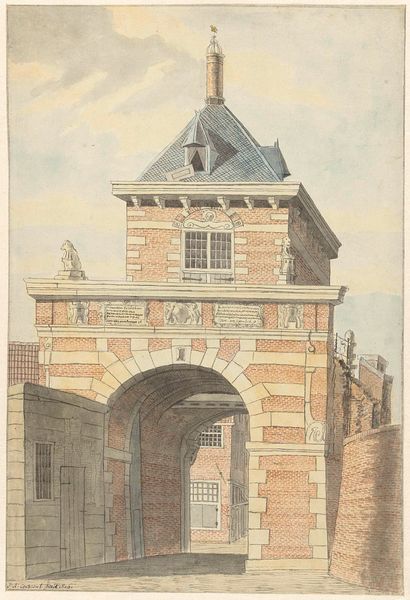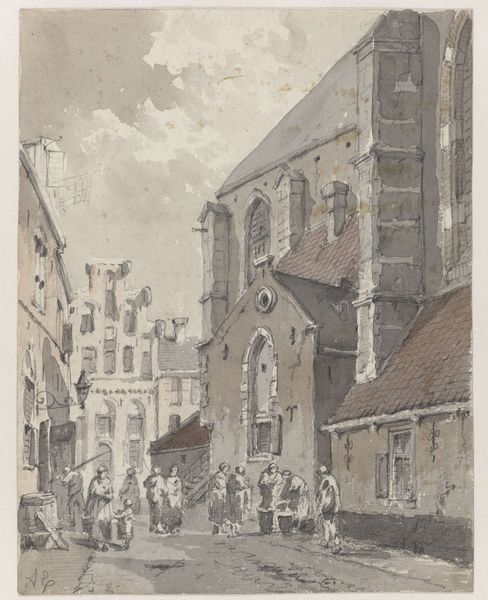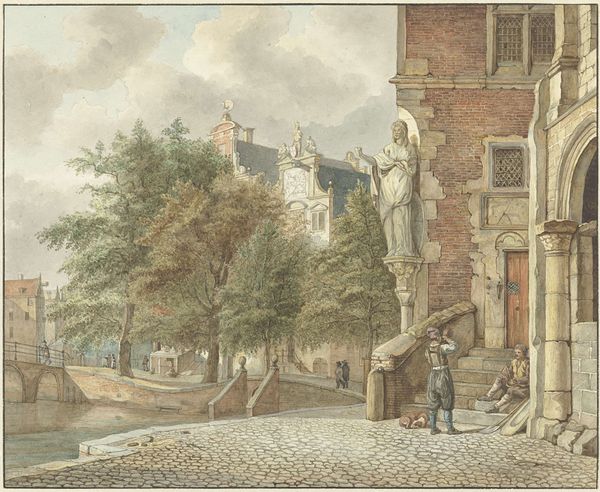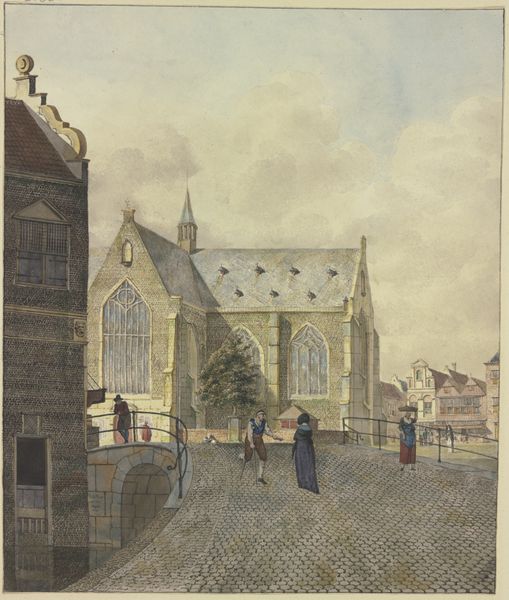
drawing, plein-air, watercolor
#
drawing
#
neoclacissism
#
plein-air
#
landscape
#
watercolor
#
coloured pencil
#
cityscape
#
mixed media
#
watercolor
Dimensions: height 337 mm, width 262 mm
Copyright: Rijks Museum: Open Domain
Editor: So, this is "Doorkijkje door een poort te Dordrecht," or "A view through a gate in Dordrecht," created by Johannes van Lexmond in 1819, using watercolor. The overall effect is really calming, almost muted. What structural elements stand out to you? Curator: The geometric rigidity juxtaposed with the soft washes is quite striking. Note the precise linear perspective converging at a vanishing point deep within the archway. It establishes depth, yes, but also sets up a system of visual hierarchies within the pictorial frame. What impact does that precise rendering of architectural form have? Editor: It makes the organic details around it, like the people and animals, feel more lively by comparison, but almost like players in the overall composition. Does the architecture dictate their presence in any particular way? Curator: Consider the relationship between the gate's imposing structure and the implied narrative taking place within its frame. How does that dynamic contribute to your experience? For instance, the artist contrasts rectilinear stone and fluid sky, activating tension in a rather subtle fashion. This tension contributes meaning – would you agree? Editor: Absolutely, the hard lines versus the soft really do direct my eye, so the tension is very present. It emphasizes the gate as a threshold, not just physically but visually too. I’d initially focused on the overall scene, but now I notice how the gate itself demands more focus. Curator: Indeed. Van Lexmond, though a product of his era, seems intent on subverting conventional perspective to a degree – almost proto-modern. By drawing attention to the constructed nature of the viewing space, Van Lexmond forces the viewer to engage critically, rather than passively. Editor: I see it now. Looking at the composition reveals a whole other layer of intention. It’s been a reminder of how vital structural analysis is to appreciating the artist's vision. Curator: Precisely, paying close attention to formal elements reveals deeper, often subversive meaning. A fruitful exercise, indeed.
Comments
No comments
Be the first to comment and join the conversation on the ultimate creative platform.
